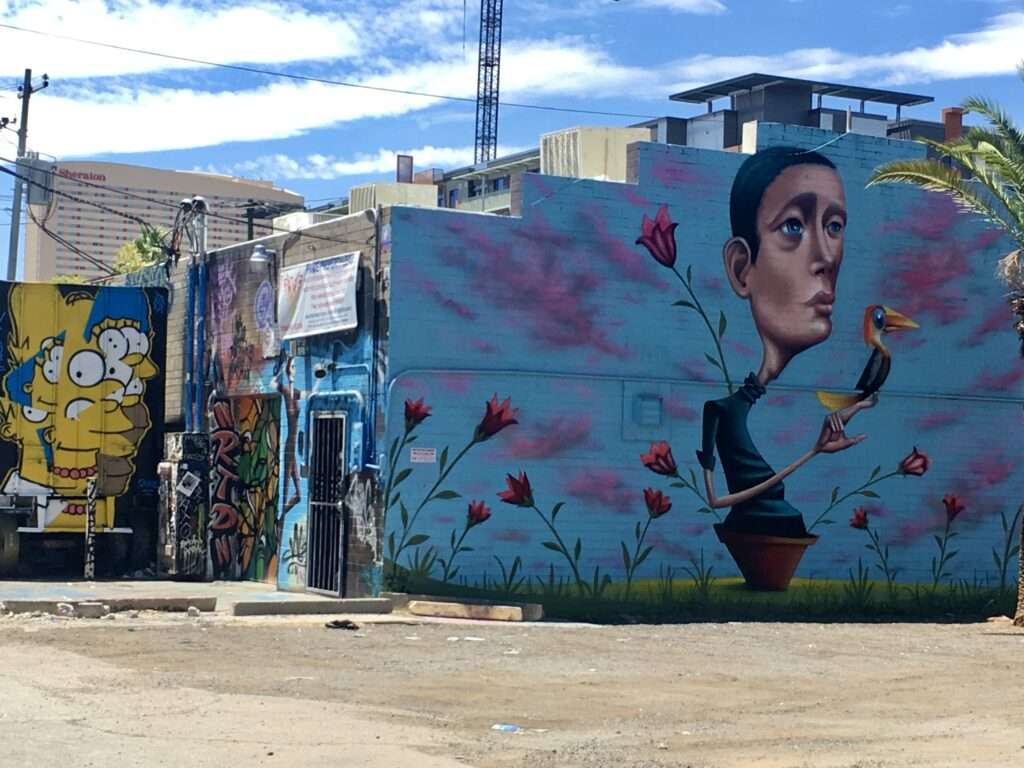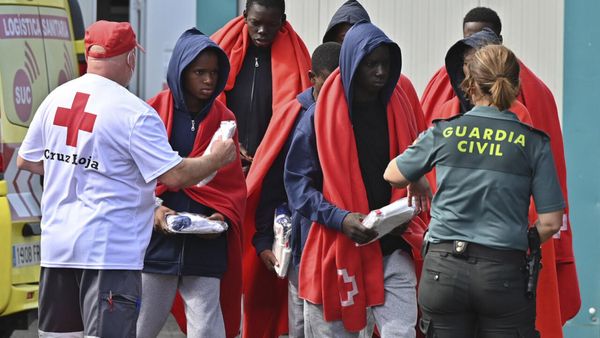
Project Rescue Children (PRC) claims to have rescued hundreds of children around the world from human traffickers. But an intensive investigation by the BBC casts major doubts on this claim. Reporter Hayley Mortimer found that multiple PRC stories—including one involving a baby "saved from traffickers"—appear to have been false and that several of the rescue centers it was supposedly fundraising for didn't exist.
PRC called the BBC's allegations "completely without merit, misleading and defamatory."
But the BBC's story appears deeply reported, with Mortimer having physically traveled to alleged rescue centers in Kenya and The Gambia only to discover they didn't exist.
Anatomy of a Scam?
PRC was founded by a former police officer named Adam Whittington, a British and Australian citizen. After leaving the police force, Whittington set up a company that helped locate kids taken abroad by their parents during custody disputes. The group later shifted focus, and it now describes its mission as rescuing and protecting children "from child trafficking and exploitation."
The group raised funds—sometimes with the help of celebrities, such as British TV personality Sam Faiers—by telling supporters they were helping to save trafficked children and build rescue centers in Kenya, The Gambia, Uganda, and the Philippines. But less than half of the money recently raised for a rescue center in Uganda made it to group's partner organization there, the BBC reports. And it gets worse: Alleged rescue centers elsewhere didn't seem to exist at all.
Mortimer and a BBC team traveled to the outskirts of Kenya's Kisumu to visit a PRC center "supposedly run by a woman known as Mama Jane." They found that "Mama Jane was an elderly lady called Jane Gori, who lived in the house with her husband." There were no kids there, "rescued or otherwise," and Gori had no idea PRC was using pictures of her house in fundraising efforts. "I did find out that her son, Kupa Gori, was PRC's director in Kenya and he had brought Mr Whittington to visit her home," writes Mortimer. "Whittington uses pictures of improvement work PRC has funded at Mrs Gori's house to convince donors he is running a rescue centre."
Nearby the alleged rescue center, Morimter encountered a man whose three children "have featured on the PRC website, described as orphaned, homeless, or victims of trafficking or exploitation. But none of this is true," reports Mortimer. The man told Mortimer he had received no money from PRC.
In another case, Whittington had shared a photo of a baby he claimed had been saved from traffickers in a Gambian marketplace. The group launched a fundraising campaign to help bring the baby back to the U.K., and solicited people to sponsor her. He also recruited influencer Alex Betts—who had been hired to promote the group on social media—to adopt her, and Betts went to The Gambia to meet and take photos with the girl whom they called Mireya. But when Betts raised concerns about the nondisclosure agreement Whittington wanted her to sign, PRC ended her contract and "attacked her online," the BBC reports.
Betts discovered that the picture of the baby that PRC had shared had been posted by a maternity unit two years prior to the supposed rescue:
The BBC has found no evidence that the marketplace rescue ever happened. But Ms Betts had met a baby—so who was the child?
In May 2024…we travelled to The Gambia. Our first stop was the location of PRC's supposed rescue centre.
But, just as we had found in Kenya, it was not a rescue centre and no rescued children had ever lived there. The man who owned the property told us it was just a family home.
With the man's help, they found "Mireya" in a nearby village. "The child's arms were covered in sores caused by a bacterial skin infection, as her mother couldn't afford the medication she needed," the BBC reports. The child's mom said her baby was born there. When the baby was three months old, a representative of PRC said people wanted to sponsor the baby, "so she had allowed him to take the child to meet Ms Betts," Mortimer writes. "She was amazed to hear the stories being told about her daughter online. She said she had never received any money but had been given some groceries on a few occasions."
Not the First Time
This isn't the first we've heard of people using incredible but dubious "rescue" stories about "trafficked" children to raise funds.
In the 1990s through the early 2010s, Somaly Mam was working with celebrities like Susan Sarandon and getting glowingly profiled in the likes of The New York Times and Smithsonian. Through her nonprofits—AFESIP in Cambodia, the Somaly Mam Foundation in the U.S.—she claimed to be rescuing girls and women around the world from "sex slavery." Hillary Clinton even toured AFESIP's headquarters in Cambodia.
Then Newsweek's Simon Marks started digging into some of Mam's "rescue" stories. They didn't check out:
In 2009, Nicholas Kristof wrote in The New York Times about a girl named Long Pross, who had finally summoned the strength to tell her stunning story of sexual slavery. He reported that a woman had kidnapped Pross and sold her to a brothel, where she was beaten, tortured with electric wires, forced to endure two crude abortions and had an eye gouged out with a piece of metal by an angry pimp. Pross, Kristof said, was rescued by Mam and became part of her valiant group of former trafficking victims fighting for a world free of sexual slavery.
Pross also told her disturbing story on Oprah and appeared in the PBS documentary Half the Sky. "Believe it or not, when I returned home, my mother and father didn't want me around. I wasn't considered a good person," she says in the documentary.
Equally hard to believe is the fact that Pross's family, neighbors and medical records all tell a different story. Dr. Pok Thorn says he performed surgery on Pross when she was 13, after her parents brought her to a hospital with a nonmalignant tumor covering her right eye. Photographs in her medical records clearly show the young girl's eye before and after the surgery.
So how did she come to be one of Somaly Mam's girls? Te Sereybonn, director of Cambodia's Takeo Eye Hospital back then, says his staff contacted AFESIP to see if they could admit Pross to one of their vocational training programs.
Another of Mam's biggest "stars" was Meas Ratha, who as a teenager gave a chilling performance on French television in 1998, describing how she had been sold to a brothel and held against her will as a sex slave.
Late last year, Ratha finally confessed that her story was fabricated and carefully rehearsed for the cameras under Mam's instruction, and only after she was chosen from a group of girls who had been put through an audition….She, like Pross, was never a victim of sex trafficking; she and a sister were sent to AFESIP in 1997 because their parents were unable to care for all seven of their children.
Around the same time Newsweek was exposing Mam's apparent deceptions, another high-profile sex trafficking story fell apart. Chong Kim's story of sex trafficking got widespread attention and was even made into a movie (Eden) that premiered at Sundance. But an investigation by the anti-trafficking nonprofit Breaking Out "found no truth to her story." What it found was "a lot of fraud, lies, and most horrifically capitalizing and making money on an issue where so many people are suffering from."
More recently, the work of Tim Ballard and Operation Underground Railroad—a U.S. group that claims to rescue kids abroad and that inspired last year's hit movie Sound of Freedom—was revealed by Vice to have been misleading people about its work.
How Did We Get Here?
The decision to conflate all prostitution with "sex trafficking" was an intentional one, cooked up by radical feminists who oppose pornography and all forms of sex work. Teaming up with religious groups, humanitarian groups, and politicians on both sides, they helped spread the message—starting in the 1990s—that sex trafficking was rampant around the world and in the U.S.
Their statistics were wildly exaggerated when not completely fabricated. But by bringing forth individuals with horrible stories, and playing on existing fears about "stranger danger" and child abuse, they were able to fully saturate U.S. and U.K. media and consciousness with the idea that women and girls were being abducted and forced into sex slavery in unprecedented numbers.
This understandably provoked concern among lawmakers, celebrities, and ordinary Americans, creating demand for ways to help end this alleged epidemic. And it proved fertile ground for folks looking to take advantage of this concern. After all, who was going to question someone seemingly devoted to stopping horrible abuse of the most vulnerable?
But as we've seen time and again (in this arena and others), an unwillingness to interrogate sensitive stories and sensationalist subjects isn't actually helping. It just gives grifters and fabulists free reign to prey on people's empathy. It also lets law enforcement get away with things like arresting and stealing from immigrant women and calling it a blow against human trafficking. And it sowed the seeds the for wild conspiracy theories like Pizzagate and QAnon.
My colleague Jesse Walker has written about how why these narratives seem to pop up—and take people in—again and again. "The captivity narrative is a primal storyline in American culture," he noted in 2014, back when Mam's reputation blew up.
This is by no means an exclusively American phenomenon. (Before anybody was producing captivity narratives in the New World, Englishmen were printing memoirs of their alleged experiences in the hands of the Barbary pirates.) But the story is well ingrained in our culture, and it is tied up…with a bunch of sexual anxieties. One particularly lurid branch of the captivity-story family tree is the series of white slavery narratives that flourished in the early 20th century. These books, films, and articles offered sensationalist accounts of women coerced into prostitution, often by the agents of a vast trafficking conspiracy.
Those stories offered a deeply distorted view of prostitution as it was actually practiced, but they were widely believed, and they had a lasting impact not just on American culture but on American law….
Captivity is obviously real. Many Indian captivity tales were written by people who really had been held prisoner by native tribes, and coerced prostitution certainly does exist. We know Mam is a fabulist because of the detailed reporting exposing her lies, not because those lies took a familiar form.
The point is that the captivity narrative is a genre. If you do invent a story, it provides a resonant formula for your deceptions.
Walker notes that these sorts of narratives seem to resonate especially with people with "white-savior fantasies," which may help explain why so many of the sex-trafficking fabulists appealing to U.S. and U.K. audiences claim to be helping rescue children in far away countries.
There's also surely a practical element to that—it's harder for people to verify your stories if they involve faraway and remote places. I'm grateful to reporters like Mortimer for actually making it to these remote places to expose the truth behind the fundraising copy. And I hope the fact that this keeps happening again and again will make people think twice about blindly buying shocking tales of trafficking terror and heroic rescue.
Today's Image

The post 'Project Rescue Children' Exposed as Latest in Series of Human-Trafficking Hoaxes appeared first on Reason.com.







